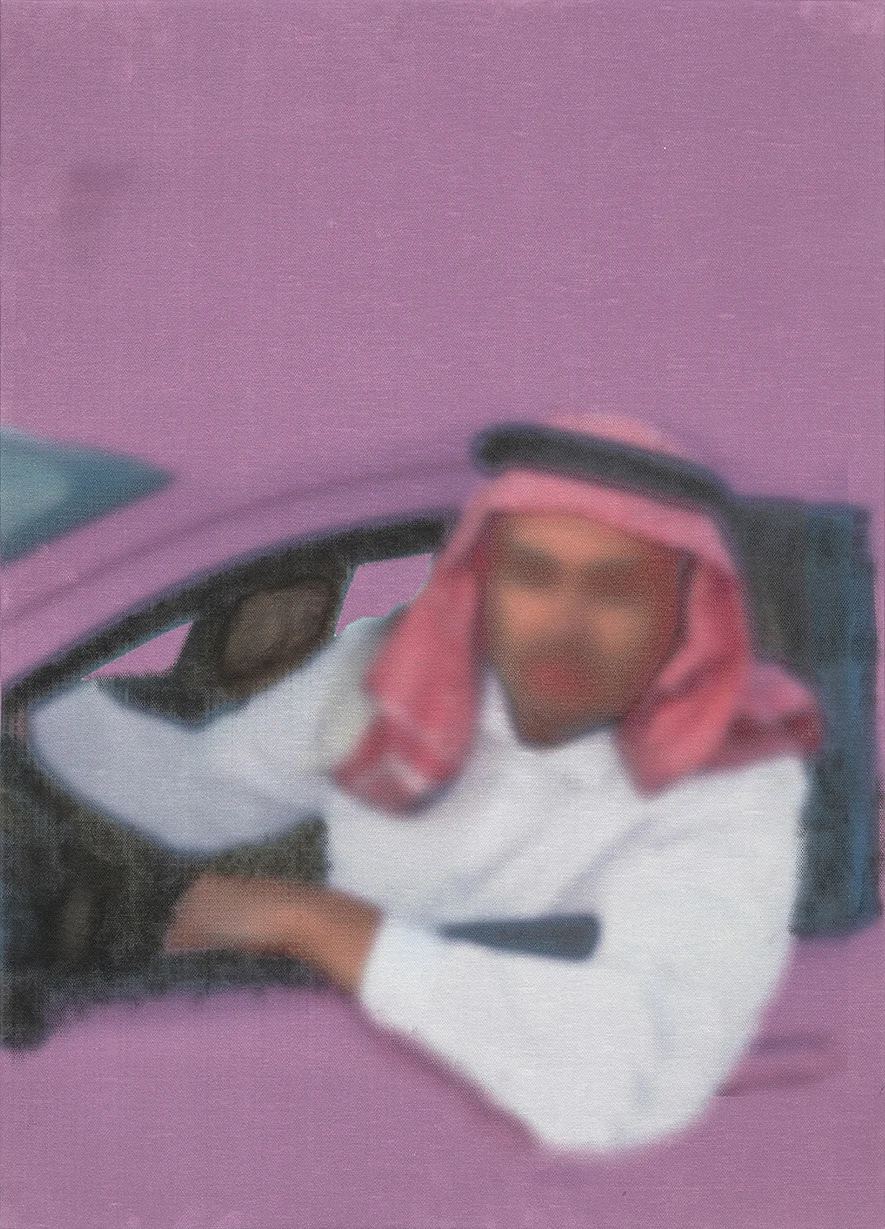
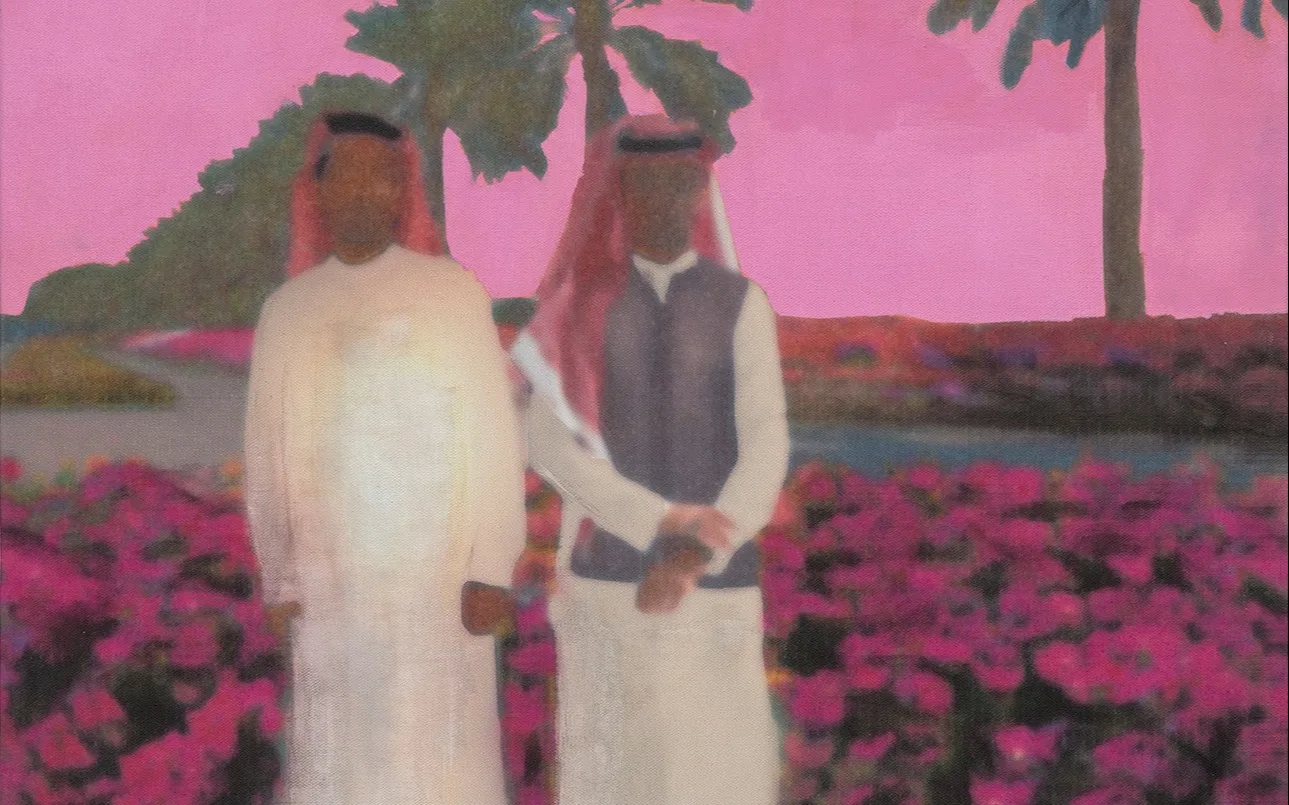
While artist Hawazin Alotaibi is keen to support the softening and effeminizing effects of art and popular culture on Arab male sensibilities, she’s determined to expose the toxicity of her own upbringing as a young woman in Saudi Arabia. She tells writer Dalia Al-Dujaili how her latest mixed media series is an attempt to unpack the gendered conditioning she was subject to growing up.
Some of the best stories start with someone deciding to rummage through boxes of old family knick knacks and ephemera. Saudi Arabian artist Hawazin Alotaibi’s latest story is no different; she found a pamphlet in a box whilst helping her parents pack for a move. “It was a gift from my school, because I was entering my tween years,” Alotaibi tells me over Zoom. This seemingly harmless booklet has taken hold of a significant space in the artist’s psyche; the words explain how women and girls “should” behave, using delicate and soft language. Receiving an “Arab education,” as Alotaibi puts it, led her to start thinking about censorship and the gendering aesthetics of these instructional pamphlets.
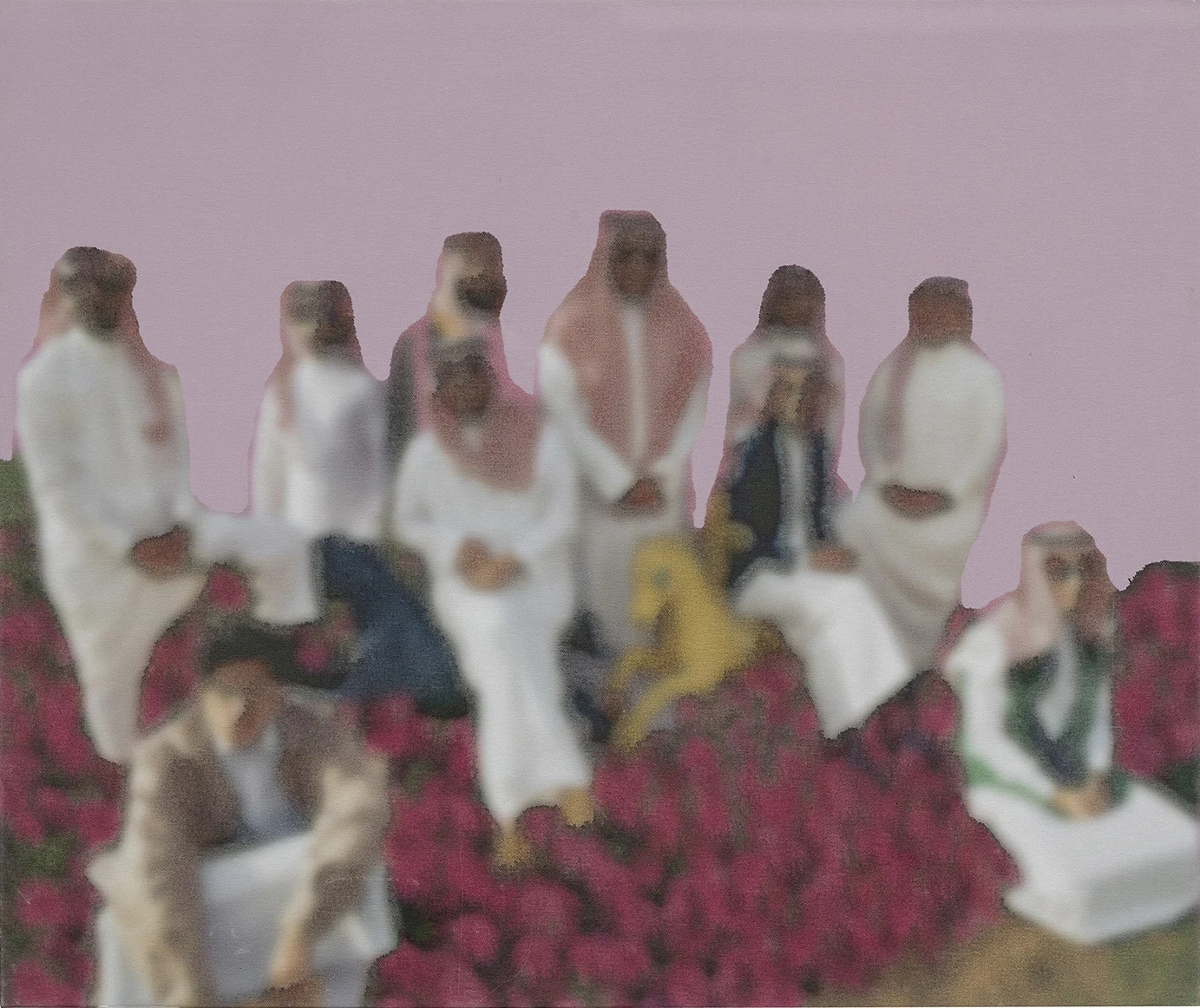

Getting her start at Camberwell College, Alotaibi attended the RCA, graduating in 2018 and scoring her first solo show only a few months on. She spent a considerable amount of her life as an artist trying to move away from stereotypes. While studying in London, she was encouraged by her tutors and peers—the “white majority”—to paint desert scenes and other typically Middle Eastern vignettes. To avoid contributing to an orientalist sensibility within the workings of western art institutions, Alotaibi moved in the opposite direction, keen to distance herself from stereotypical Middle Eastern aesthetics. But the time came when she felt a need to reckon with this fight or flight response, to face this orientalist approach head on, inverting stereotypes by repurposing them in her work rather than “confirming” them for European audiences.
Using mixed media and acrylic, she began to draw on her experiences from within Saudi Arabia and Egypt, using Gulf men specifically to scrutinize gender roles and acts of censorship in the region. The images are satirically humorous, innocently presented with insidious undertones. The viewer is only able to discern the stereotypical features of Gulf men; their traditional clothing, their tanned skin and their heavy, dark facial hair. Within orthodox Islamic law, it is technically forbidden to recreate human forms. Hence, Alotaibi’s series features only blurred faces and figures, owing to the out-of-focus effect, which incidentally adds to the ironically innocent and “fuzzy” mood of the paintings.

The cartoon-like aesthetic pokes more fun at the contradictions at the heart of the teachings she was exposed to. Layering characteristically large, expressive eyes onto blown out pink flowers, she literally blurs the lines between masculinity and femininity, employing an innocence into the scene which is held up to scrutiny by default, by nature of the male-dominant Arab space.
During lockdown, the artist was on her phone constantly in an attempt to connect to the Arab world, to decipher what was happening within it and to witness its growth spurt. “There's a lot of changes happening constantly,” says the artist, who was subsequently urged on by seeing how men in the Arab region were “embracing femininity in the name of fashion.” Whilst being entirely supportive of changing Arab male presentations, Alotaibi found it somewhat unsettling, given that she felt she had a very specific type of femininity forced upon her, noting the “trauma” of such an experience.
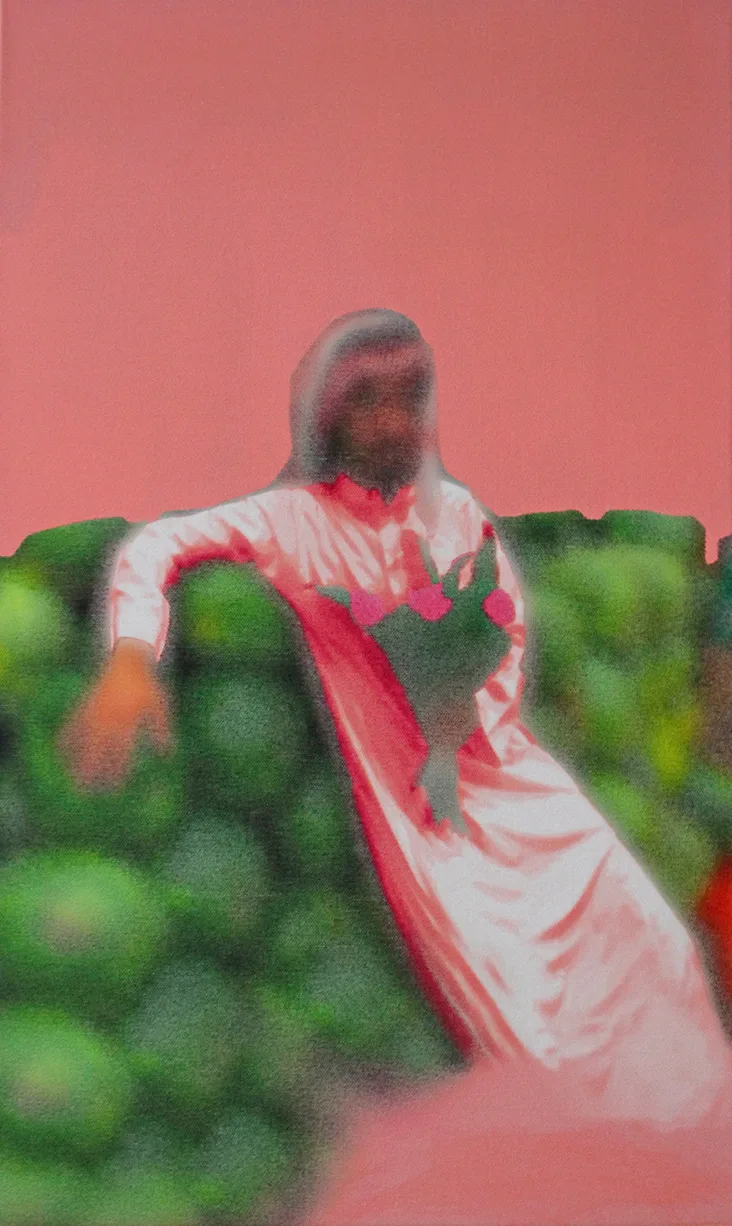
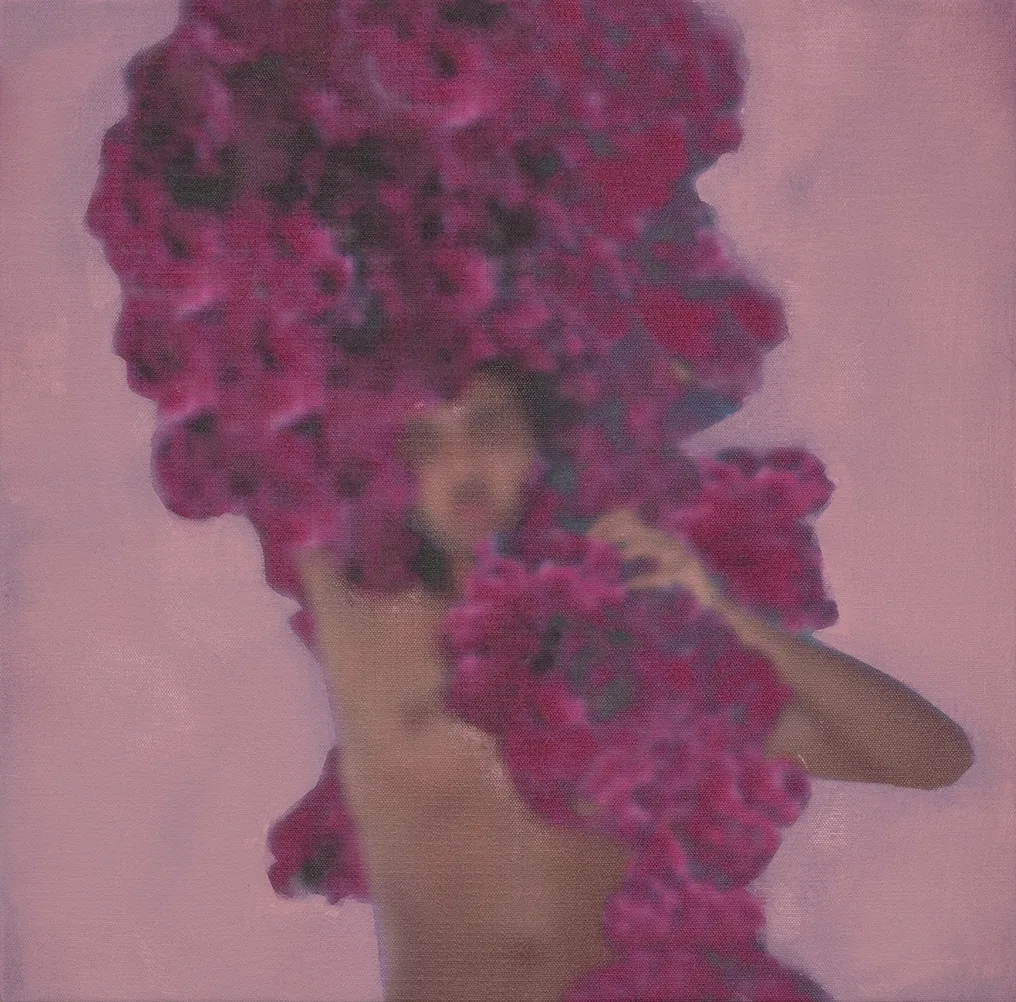

It’s clear even from our relatively brief chat how much the imperative binary of gender and religious orthodoxy within the country has affected Alotaibi both personally and artistically. “It really messes you up,” she asserts. “These books [they gave to schoolgirls] are so fascinating to me because they would censor faces and include flowers in the design. They would say things like, ‘A good girl helps her mom, helps her brother, doesn’t wear perfume.’ There were all of these cute colors and things that look very safe, very girly, very pure.”
In some pieces, Alotaibi takes men out of context and engulfs them in flower beds. In others, men can be seen leaning out of car windows, seated in the traditional portrait pose on classic opulent Gulf furniture, or pictured in hypermasculine social settings with the stereotypically “exotic” signifiers of palm trees or watermelons. A feeling is drawn of moments which are both entirely typical and atypical; Alotaibi’s effect is an intentional dismemberment of norms, tradition and expectations. At once, she imposes the current moment’s refashioning of Arab manhood, whilst leaving a hazy veil over the ways in which women were also affected by enforced gendering, and subverting orientalist expectations of Arab art.

And there is more work to be done. As another wave of feminist resistance sweeps the Middle East, the question of women’s liberation remains as pertinent as it was during Alotaibi’s childhood and indeed for millennia preceeding. She’s looking forward to continuing the series as she immerses herself within a current and rapidly evolving Middle Eastern arts community headed by like-minded women and marginalized Arabs, and her subversive and provocative application of mixed media will surely find itself in good company.

